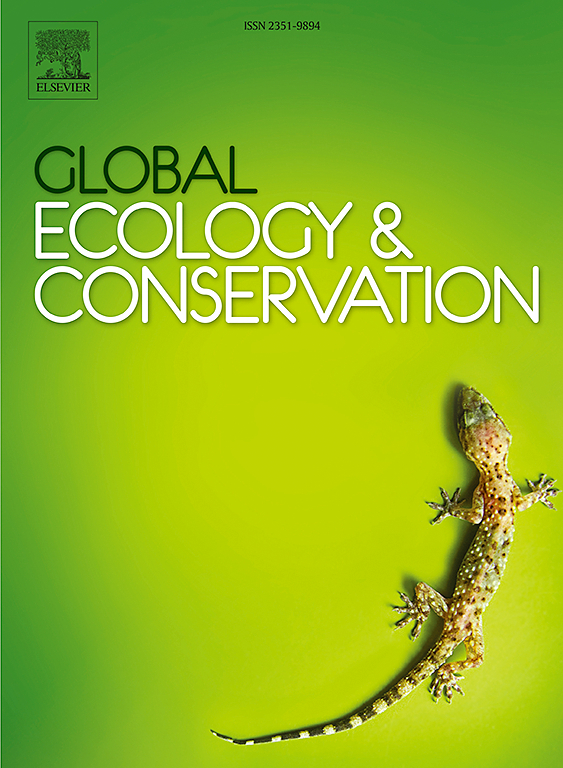Carbon sequestration law by phytoliths in the bamboo forests: Insights for the management of phytolith carbon sink
IF 3.5
2区 环境科学与生态学
Q1 BIODIVERSITY CONSERVATION
引用次数: 0
Abstract
Phytolith-occluded organic carbon (PhytOC) plays a crucial role as a stable and enduring carbon sink in the intricate web of terrestrial ecosystems. Bamboo forests exhibit the most prominent ability of phytolith carbon sequestration among terrestrial vegetation. This study systematically investigated the complex dynamics of phytolith carbon sequestration and accumulation in different organs (leaves, branches, culms, and roots) of P. edulis and B. emeiensis forests across three growth stages (young, middle-aged, and mature) in shale and limestone regions of southwest China. The results unveiled the spectrum of PhytOC content, storage, and sequestration rate within the P. edulis forests, ranging from 0.24 to 10.51 g·kg−1, 0.62–35.72 kg·hm−2, and 0.75–61.06 kg·CO2·hm−2·a−1, respectively. On the other hand, the B. emeiensis forests exhibited a wider range, with PhytOC content varying from 0.33 to 20.59 g·kg−1, storage from 0.25 to 102.81 kg·hm−2, and sequestration rate from 0.90 to 75.39 kg·CO2·hm−2·a−1. The differences in phytolith carbon sequestration were significant or extremely remarkable across forest species, ages, organs, and bedrock types. Roots play a major role in the phytolith carbon sequestration of bamboo forests. The root PhytOC sequestration rate of P. edulis and B. emeiensis is 30.67 and 12.69 kg·CO2·hm−2·a−1, respectively. Forest age and bedrock both have a significant impact on the phytolith carbon sequestration of bamboo forests. Both soil physicochemical properties and forest community structures are closely related to phytolith carbon sequestration and accumulation in the bamboo forests, which are great of significance in the artificial intervention for increasing the phytolith carbon sink.
求助全文
约1分钟内获得全文
求助全文
来源期刊

Global Ecology and Conservation
Agricultural and Biological Sciences-Ecology, Evolution, Behavior and Systematics
CiteScore
8.10
自引率
5.00%
发文量
346
审稿时长
83 days
期刊介绍:
Global Ecology and Conservation is a peer-reviewed, open-access journal covering all sub-disciplines of ecological and conservation science: from theory to practice, from molecules to ecosystems, from regional to global. The fields covered include: organismal, population, community, and ecosystem ecology; physiological, evolutionary, and behavioral ecology; and conservation science.
 求助内容:
求助内容: 应助结果提醒方式:
应助结果提醒方式:


